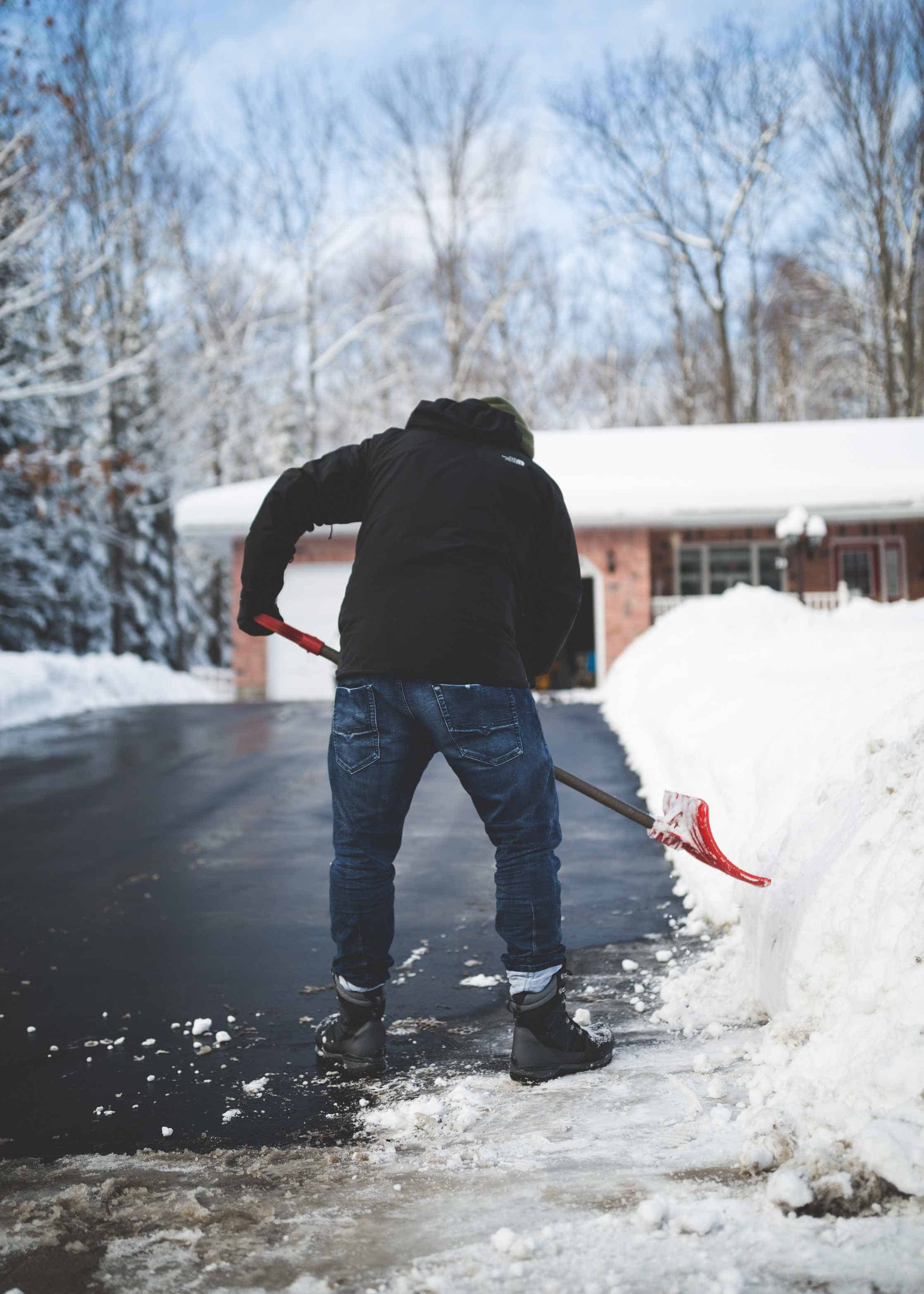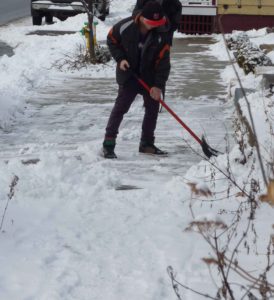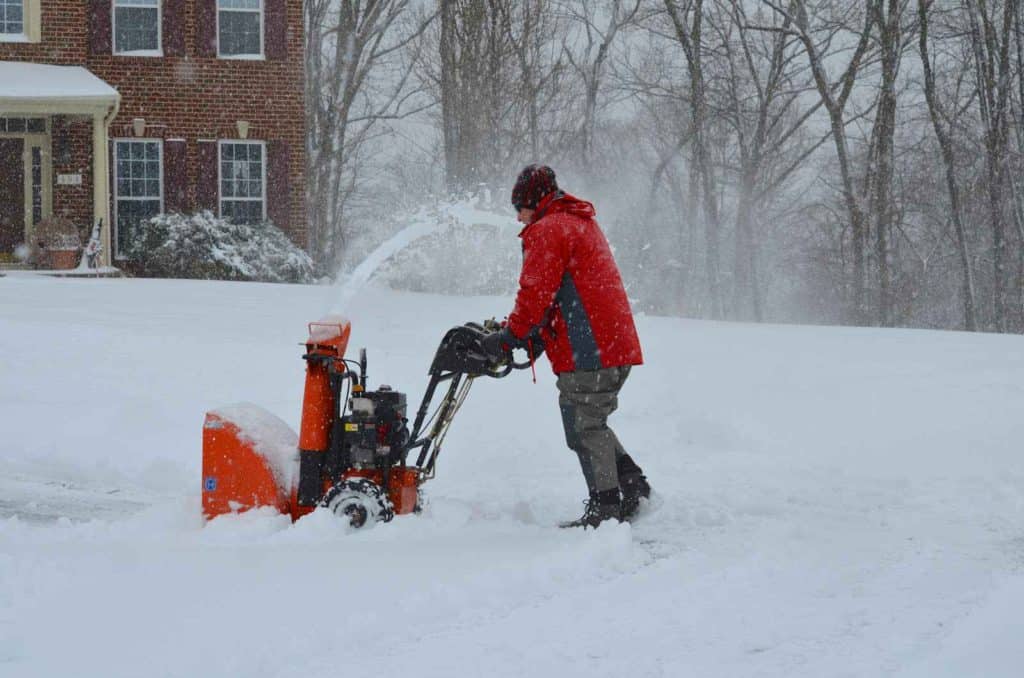
How to Keep Concrete Walkways Safe and Durable During Winter Months
One of the biggest issues to owning a home in northern Illinois is keeping your walkways safe during snowy and cold winter months. That’s because on average, we get right around 3 feet of annual snowfall per year.
So, what are you to do as a homeowner to keep your walkways safe and have them last for years into the future? Well, it all starts with understanding why sidewalks crack in the first place during winter months.
What Causes Concrete Sidewalks to Crack in the Winter?
The main thing that causes sidewalks to crack during winter months is something known as freeze/thaw. This is what happens when water gets in and around concrete and then freezes. As water it expands and causes concrete to break apart.
If you’re thinking that concrete is waterproof, you certainly aren’t alone. Most people believe that water flows right off the top of concrete. Contrary to popular belief, concrete is not waterproof on its own.
Concrete is somewhat porous and can absorb some water. During warmer summer months, this isn’t a big deal as water will flow through the concrete into the ground below. During cold winter months, this can become a major issue as water is trapped in the concrete and freezes as temperatures drop. This freeze causes the concrete to expand. Once concrete reaches a certain point of expansion, it starts to break apart.
This results in cracks appearing on top of your sidewalk which then allow more water to enter the concrete. As you can imagine, over time this means bigger cracks in your sidewalks until they are falling apart.
How can you stop this from happening? The first step is to make certain that your concrete is still on a proper grade.
How to Make Sure Your Sidewalks Are Still Graded Correctly
 A lot of people think that sidewalks are perfectly flat. Looking at them, they seem to be the most part, right?
A lot of people think that sidewalks are perfectly flat. Looking at them, they seem to be the most part, right?
Actually, sidewalks are poured at what is referred to in the concrete world as a grade. This means that while a sidewalk may look flat and perfectly level, it’s really running at a slight downward angle away from your house.
This is important for a few reasons. First, when sidewalks have a slight grade to them, water will not pool on top of them and less water will be absorbed by the concrete itself. This means less water in your concrete during the free/thaw cycles of winter months.
Second, any water coming off your sidewalks should always be directed away from your home. If your sidewalks aren’t graded properly, it can result in significant water damage to the foundation of your home.
So, how can you make certain that your sidewalks are graded correctly?
For starters, you can simply take a level and check multiple areas of your sidewalk. This will give you a basic idea of what the grade of your sidewalks. By taking this step, you can make certain that your sidewalk is at least running a grade of some type in the proper direction.
The problem is that over time many sidewalks will settle into the ground and compromise their grade. This is when it’s important to have a professional look at your sidewalks to see if they’re still running a proper grade percentage.
If you’re unsure if your sidewalks are still graded correctly, give us a call atJohnson Home Inspection Services, LLC. We can inspect them for you and let you know if any repairs need to be made.
If your sidewalks are graded properly, then it’s time to look at some additional steps you can take to keep them safe and well maintained through winter months.
It Starts with Good Snow Removal Practices
 The very first step to maintaining safe and durable sidewalks during the winter is to try and keep them as as possible. There’s a little bit of a catch here though. That catch that a right way and a wrong way to keep your sidewalks snow free.
The very first step to maintaining safe and durable sidewalks during the winter is to try and keep them as as possible. There’s a little bit of a catch here though. That catch that a right way and a wrong way to keep your sidewalks snow free.
The first step to doing this is to understand when you should remove snow from your sidewalks in the first place.
When Should You Remove Snow from Your Sidewalks?
Optimally, the best time to remove snow from your sidewalks is first thing in the morning. This allows them to have the most time possible to dry before colder temperatures set in again.
For example, if there’s a storm during the night and no more snow is expected during that day, you need to remove the snow from your sidewalks is early in the day as possible. Doing this will allow them to have the heat of the afternoon sun to help them dry before temperatures dip during the night once more.
On the flipside, if you receive snow late in the afternoon, it can often be better to leave it alone until the following morning. This is because snow acts as a little bit of an insulation layer for your concrete. So long as temperatures don’t get too low, the water in your concrete may not freeze thanks to the snow resting on top of it.
Unfortunately, this only works if there’s not going to be a lot of foot traffic on your sidewalks. Always remember when it comes to removing snow, safety is more important than the durability of your walkways. If you’re going to be walking on them often, it’s more keep them clear and avoid potential falls.
Now that you understand what time of day is best for snow removal, which about some of the options available for getting the snow off your sidewalks.
What’s the Best Way to Remove Snow from Your Sidewalks?
There are a few options available to you when it comes to removing snow from your sidewalks like snow shovels, snowblowers and snow scraper blades. There are a few pros and cons to each method:
- Snow Shovels – Snow shovels are the classic way to get snow off your sidewalks, porch driveway. They’re very labor-intensive to use but taking the time to pick the best snow shovel for your needs can help save your back and your sidewalks while also making the job a lot easier.
- Snowblowers – Snowblowers are a great way to remove snow from your walkways with ease. The biggest problem is the amount of maintenance they require compared to the amount of time they’re used.
- Snow Scraper Blades – If you already own and ATV/4 wheeler or a larger lawnmower, you can often find snow removal blades designed for them. These blades can be a great addition to your equipment that will give you additional bang for your buck when considering the original purchase. Just make certain whoever is driving the vehicle is careful to not cause damage to the edges of your sidewalk. Set your blade slightly higher than the surface of your sidewalk and go slowly to avoid damage.

As you can see above, there are several benefits and issues with each option of snow removal that you have.
Notice how I didn’t mention ice melt or salt as being an option for snow removal on your sidewalks? That’s because salt or ice melt is best used after you’ve taken the time to remove most of the snow.
Should You Use Ice Melt or Salt on Your Sidewalks?
Using ice melt or salt can be a great way to keep your sidewalks as slip-free as possible. The problem is that some types of ice melt can cause significant damage to your sidewalks, kill grass and plants around your sidewalk, or even cause harm to your children, pets and other wildlife. Because of the potential problems ice melting products can cause, it’s important to know which products will work the best for your individual needs.
I’ll talk more about how you can choose the best ice melt or salt for your individual needs in a later post but for I will give you a general recommendation.
That recommendation being that you should seek out ice melt products that have high calcium chloride content. This is because calcium chloride has a lower freezing point than sodium chloride and will not corrode your concrete as badly as sodium chloride.
Again, I’ll return to this topic in a later post on how to choose the best ice melt products for your individual needs.
Final Thoughts
There are a lot of things that you can do as a homeowner to keep your concrete sidewalks safe to travel during the winter while also looking great for years to come.
Make sure to remove snow from your sidewalks during optimal times, use the snow removal equipment for your needs, and make certain to use a deicing product that won’t harm your family, pets or sidewalks.
Make sure to also check the grade of your sidewalk to ensure it is shedding water in the right direction and that it’s not causing harm to your home foundation.
If you have any doubts about the condition of your sidewalk or if it’s on the right grade, give us a call today to schedule an inspection. We will happily advise you on any additional steps that you need to take to make certain your home and your sidewalks continue to be of value to you for as long as possible.

To Contact Johnson Home Inspection Services, LLC
Phone: 815-441-1275
Email: Kris@JhisInpections.com